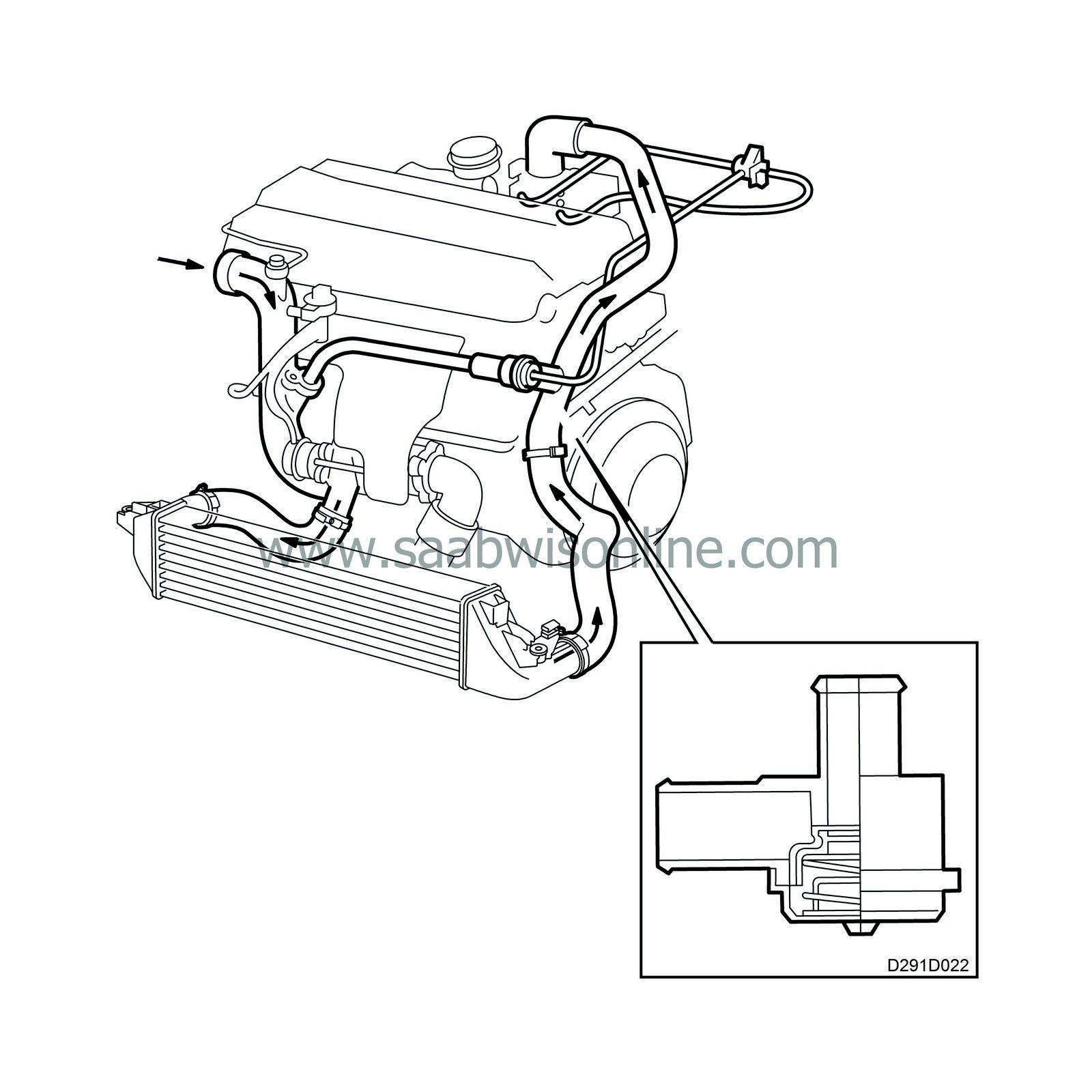Charge air bypass valve (B235R)
|
|
Charge air bypass valve (B235R)
|
|
1.
|
Overpressure in the intake manifold
|
|
3.
|
Charge air bypass valve closed
|
|
With accelerator depressed
|
When the turbocharger is working, pressure builds up in the turbocharger delivery pipe, throttle body and intake manifold. As long as the throttle is open, there will be pressure on both sides of the bypass valve diaphragm, which is kept closed partly by the force of the integrated spring, partly by the pressure from the intake manifold.
|
With accelerator released
|

|
1.
|
Vacuum in the intake manifold
|
|
3.
|
Charge air bypass valve open
|
When the throttle butterfly closes, a vacuum is quickly created in the intake manifold due to combustion while the overpressure before the throttle butterfly remains the same.
To prevent pressure surges in the intake manifold resulting in jerky running, the pressure in front of the throttle must be evacuated when the throttle opens again. The bypass valve signal line, which is normally connected to the outlet in front of the throttle, is instead connected to the outlet after the throttle by a solenoid valve controlled by Trionic. For further information on the solenoid valve, see group 2 Engine management system.
The vacuum in the intake manifold causes a vacuum on the spring side of the bypass valve as well. The vacuum opens the valve and allows the pressure from the delivery pipe and throttle body to evacuate to the inlet hose.
This connection is active until the pressure in front of the throttle is stable again, after which the connection is switched back between the signal line and the outlet in front of the throttle.




